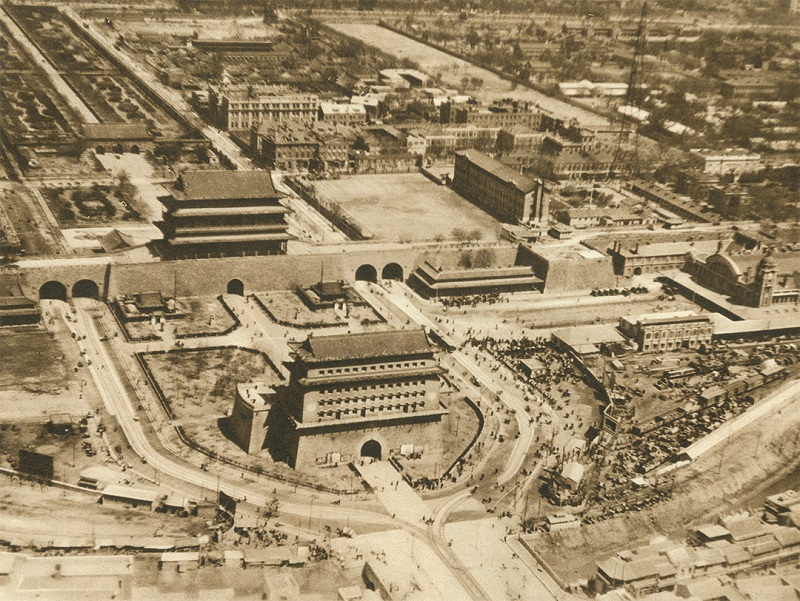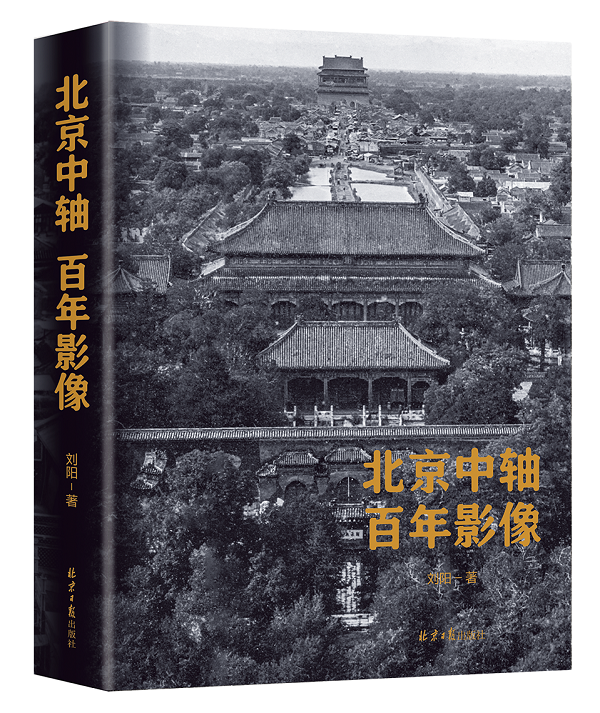Visual History

Beijing, a magnificent city, is bisected by a straight and clear Central Axis. Altars, temples, and other important buildings scattered on both sides of the axis form the splendid and orderly layout of the city. The Central Axis is known as the soul and backbone of the city.
The book Centennial Images of Beijing’s Central Axis collected more than 700 vintage images taken by Chinese and foreign photographers from 1860 to 1949. All of them are related to the Central Axis running from the Yongding Gate in the south to the Bell and Drum Towers in the north, and other ancient buildings, altars, temples and gardens scattered along it. Those images document the changes of Beijing’s Central Axis during that period.
The book covers almost all the buildings on the Central Axis including the first photo of the Central Axis in history, taken in 1860 by Italian-British photographer Felice Beato (1832-1909). He stood on the city wall of the Zhengyang (Qianmen) Gate and took a panoramic photo of the Daqing Gate by connecting six negatives, the first of its kind in the history of Chinese photography.

And some old buildings that have disappeared live on in the book. Many surviving buildings on the Central Axis have undergone tremendous changes in the past century. For example, many think of Tianqiao (Heavenly Bridge) as just the name of a place in Beijing today. In fact, the bridge was built in the Yuan Dynasty (1271-1368). The high bridge body of the overpass was demolished and replaced by a low stone bridge in 1906, the 32nd year of the reign of Emperor Guangxu of the Qing Dynasty (1644-1911). Not until 1934 was it completely demolished. Two photos of the ancient bridge from different periods are included in the book.
Importantly, many photos are the only or one of very few surviving photos of the buildings. For example, a teahouse was built on the Platform for Viewing Planting at the Temple of Agriculture during the Republic of China period (1912-1949). And a playground with swings and a court for ball playing opened near the Prayer Hall at the temple. Other precious old images include a four-sided clock tower, a landmark of Tianqiao, an interior view of the Guandi Temple in the barbican outside the Qianmen Gate, and the Buddha statues inside the Wufang Pavilion in Jingshan Park.
The book also features many old images of buildings on both sides of the Central Axis such as the Imperial Ancestral Temple to the left and Imperial Divine Temple to the right, the embassy area in Dongjiaomin Alley, and old photos of Zhonghai, Nanhai, and Beihai lakes as well as Qianmen Dashilar and other areas.
Each building was captured in different images from different angles, which all depended on the instincts of photographers in different periods. Through the photos, readers can understand historical events from more diverse angles, such as the changes of the Zhengyang Gate and the Wupai Memorial Archway and the evolution of the Tiananmen Rostrum at turning points of history.
Through precious historical images, this book provides readers with a “visible” history of Chinese architecture, historical events, and social changes about a hundred years ago.
The book provides a wealth of information on Chinese history, geography, cultural relics, and folk customs in the past. Readers can also review the past from the perspective of the development of human civilization and better understand the Chinese culture of integration and harmonious coexistence.